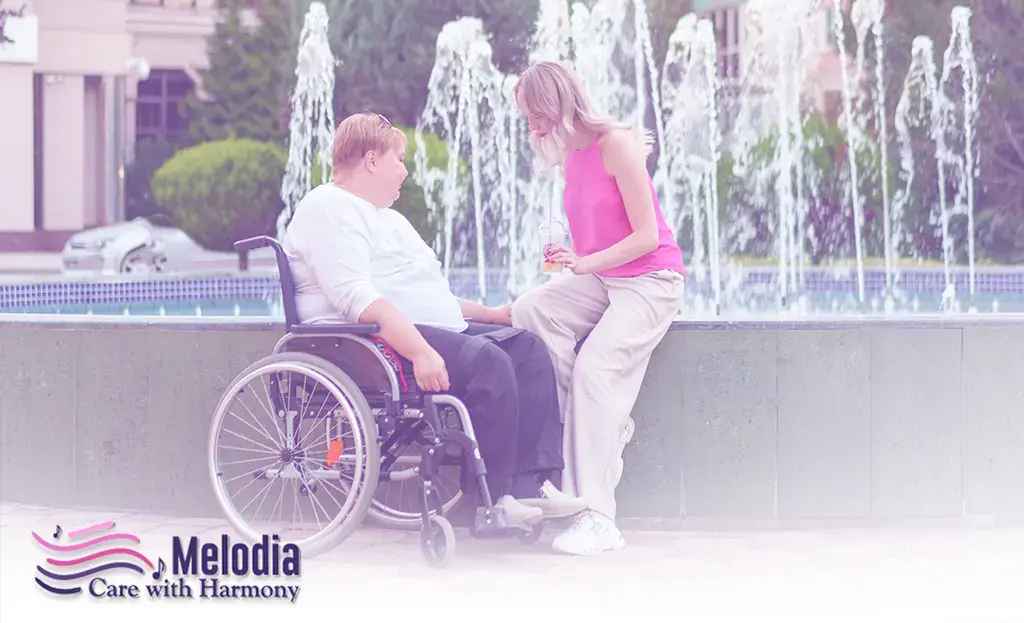Hospice Care and Palliative Care help terminally ill patients live better. They have similar goals but different approaches:
Hospice Care

Patients with a six-month prognosis receive hospice care. Hospice care prioritizes patient comfort and quality of life over disease treatment. Hospice care is often given in patients’ homes, nursing homes, or hospice facilities.
Key features of hospice care include:
- Pain and symptom treatment: Hospice professionals prioritize pain and symptom management to support patient well-being.
- Emotional and spiritual support: Hospice care meets the patient and family’s emotional and spiritual needs during the end-of-life journey.
- Bereavement support: Hospice care counsels the patient’s family and loved ones during bereavement.
Palliative Care

Palliative care, on the other hand, improves the quality of life for people with serious illnesses, regardless of prognosis. Palliative care, unlike hospice care, can be delivered alongside curative therapy.
Key features of palliative care include:
- Symptom management: Palliative care providers treat pain, nausea, tiredness, shortness of breath, anxiety, and sadness.
- Holistic support: Palliative care addresses patients’ physical, emotional, social, and spiritual needs.
- Decision-making support: Palliative care professionals help patients understand their treatment options and make informed decisions based on their beliefs and goals.
- Continuity of care: Palliative care providers work with the patient’s primary medical team to provide seamless care.
Hospice care provides comfort and assistance to people with six months or less to live. However, palliative care improves the quality of life for patients with serious illnesses at any stage, regardless of prognosis, by treating symptoms and offering comprehensive support.
Hospice and Palliative Care Eligibility Criteria

Hospice and palliative care increase the quality of life for people with life-threatening illnesses or near death. Their eligibility criteria and qualifications differ:
Eligibility for Hospice Care
Hospice care is usually reserved for patients with a six-month or shorter prognosis and a life-limiting illness. Hospice care focuses on comfort and support rather than disease treatment.
- A doctor’s diagnosis of a terminal illness with a limited life expectancy is one hospice eligibility requirement.
- The willingness of the patient to forgo curative treatment for comfort care.
- Choosing hospice above other medical treatments.
Eligibility for Palliative Care
Regardless of life expectancy, anyone with severe disease can receive palliative treatment. Its primary goals are to reduce symptoms, regulate pain, and improve patient quality of life. Patients don’t have to stop medical treatment to receive palliative care. A severe illness with symptoms including:
- Pain, breathing problems, nausea, and weariness may qualify for palliative care.
- Support is needed to manage living with a severe disease’s physical, emotional, and spiritual elements.
In conclusion, hospice care is for terminally sick patients, while palliative care is for all seriously ill patients. Both types of care provide comfort and help, but their breadth and timing differ.
Hospice and palliative care eligibility requirements vary by country, state, and healthcare provider. Medical conditions, healthcare providers, or insurance plans’ policies may also affect needs. Talk to a doctor or provider about eligibility and choices if you or a loved one is contemplating hospice or palliative care.
Who is Eligible for Hospice Care?

The following guidelines determine hospice eligibility:
The patient and family have chosen palliative care for a terminal illness (prognosis < 6 months). If either:
- 50%-60% Palliative Performance Scale (PPS) rating
- Dependence in 3 of 6 ADLs
- The patient’s nutritional status has changed, e.g., >10% weight loss in 4-6 months.
At least one of the following indicates that the patient’s clinical state has worsened in the preceding 4-6 months:
- Three hospitalizations/ED visits
- Cognitive decline
- Physical tolerance decline
- Other comorbidities
These recommendations—provided as a convenient tool and not a replacement for a physician’s professional judgment—help clinicians identify when their patients fulfill clinical standards for hospice eligibility for life-limiting illnesses.
Who is Eligible for Palliative Care?

Consult palliative care for your patient if:
Assistance is required for the care team, patient, or family in dealing with complex decision making and establishing goals of care. Goals of care are formulated when a doctor has an open and guided discussion of the following:
- Uncertain prognosis
- Uncertainty about treatment options
- End-of-life uncertainty and hospice suitability
Care opinions vary. Some examples:
- The patient and family desire such care which the team believes will fail.
- DNR orders conflict.
- Artificial nourishment and hydration have limited therapeutic value in cognitively impaired, ill, or dying patients.
- Distress in the family may hinder surrogate decision-making.
There are threshold circumstances that may indicate continued decline:
- New life-limiting diagnosis
- Declining function and inability to perform daily tasks
- Unpredictable weight loss
- Long-term care hospitalization
Conditions are:
- Multiple therapy failures for metastatic cancer
- Cancer neuropathies
- Brain tumors
- Spinal cord compression
- Carcinoma meningitis
- Frequent exacerbations of advanced lung illness
- LVAD or IV pressors for progressive heart disease
- Renal failure despite dialysis
- Neurodegenerative disease contemplating feeding tubes or ventilators
- Anoxic encephalopathy
- Stroke with 50% function loss, life-limiting.
- Multi-trauma disaster
- Ventilator usage
Hospice and Palliative Care Requirements

Patient condition, care objectives, treatment approach, hospice, and palliative care have different requirements. Here is a more comprehensive summary of their respective requirements:
Hospice Care Requirements:
- Terminal Illness: Hospice patients must have a terminal illness with a prognosis of six months or less. The patient’s attending physician makes this prognosis, and is occasionally confirmed by a second physician.
- Curative Treatment Waiver: To receive hospice care, the patient must waive curative treatments to resolve the underlying illness. Instead, emphasis is placed on pain management, symptom relief, and emotional and spiritual support to the patient and their family.
- Physician’s Certification: Hospice care requires a doctor’s terminal diagnosis. Typically, this certification is granted after a comprehensive examination and evaluation of the patient’s medical history.
- Decline in Health: The patient’s health must have declined to the point that curative interventions are no longer effective or appropriate.
- The choice to Receive Hospice Care: Hospice care is elective and must be chosen by the patient or their authorized decision-maker.
Palliative Care Requirements:
- Serious Illness: Palliative care can help people with severe illnesses. Chronic, progressive, or deadly diseases are possible.
- No Limit on Curative Treatment: Unlike hospice patients, palliative care patients can obtain curative treatment for their illnesses.
- Quality of Life: Palliative care is indicated when symptoms impair quality of life. These include pain, trouble breathing, nausea, exhaustion, and emotional discomfort.
- Holistic Support: Palliative care covers physical, emotional, psychological, and spiritual needs.
- No Time Limit: Unlike hospice care, palliative care has no time limit. Palliative care is available from diagnosis to end-of-life.
As their illness develops and treatment goals change, some patients may switch from palliative to hospice care.
Hospice and palliative care requirements and availability vary by country, jurisdiction, and healthcare facility. If you or a loved one are considering either type of care, it’s helpful to talk to a doctor or hospice/palliative care provider about the patient’s condition and treatment goals. If you are still trying to determine whether or not the conditions for hospice care have been met, please feel free to contact us here or book an appointment for a hospice consultation.

